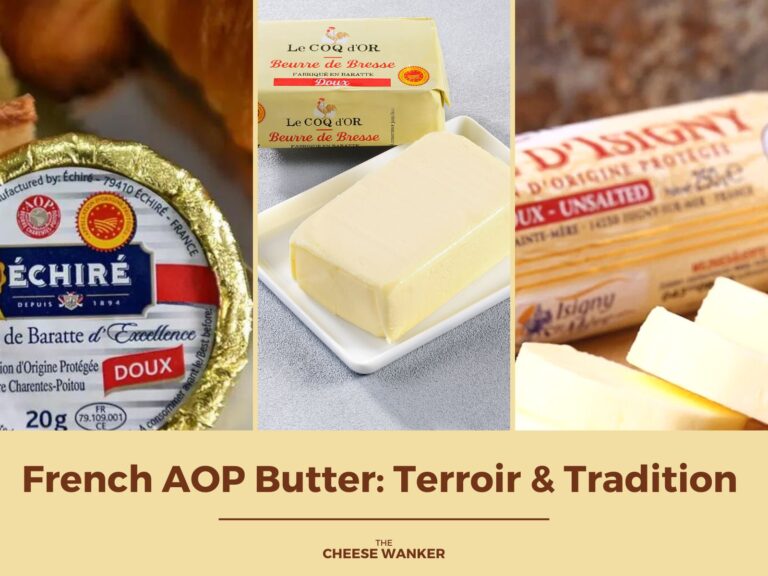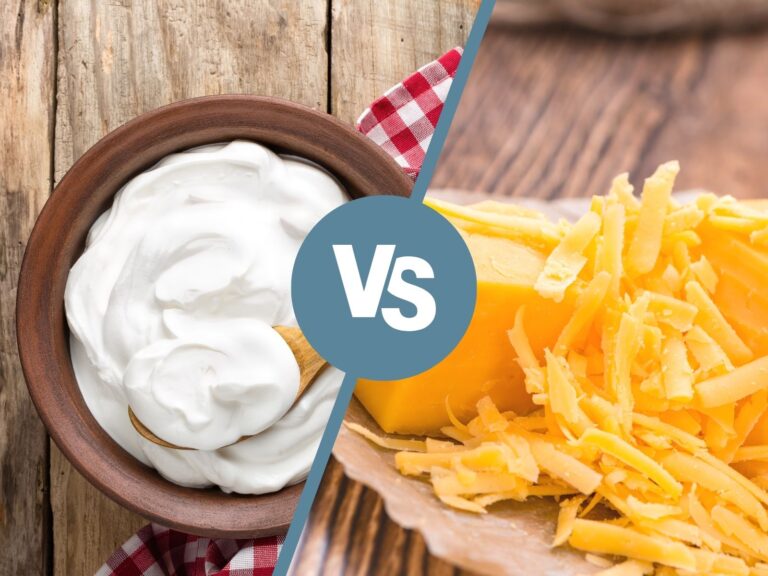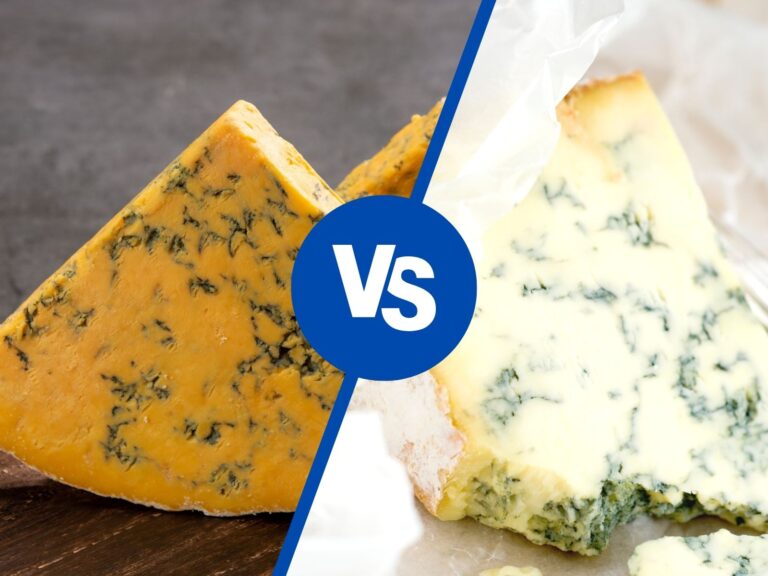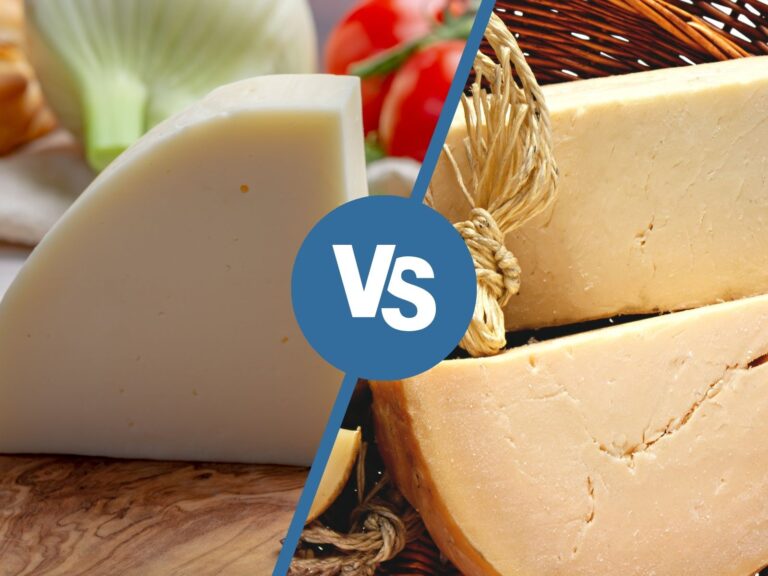When it comes to dairy products, two of the most popular options are butter and cheese. Both are commonly used in cooking and baking, and they have distinct flavours and textures. In this blog post, we’ll explore the differences and similarities between butter and cheese, how they’re made and how to use them.
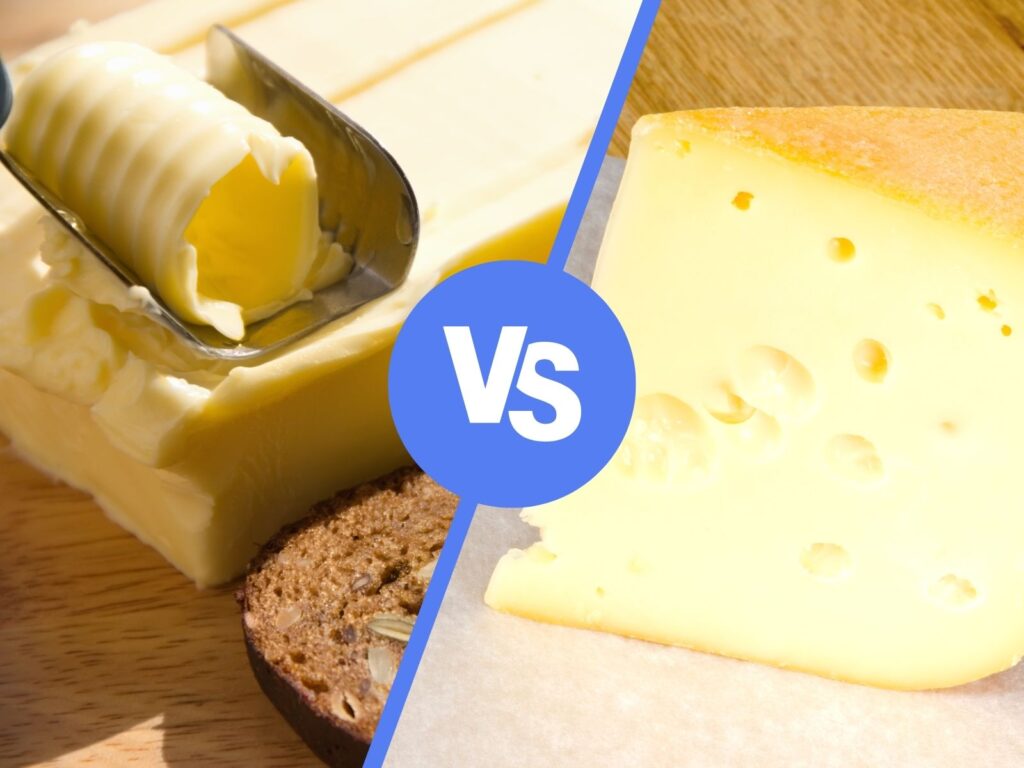
SEE ALSO: The essential ingredients you need to make cheese →
What are dairy products?
Without a doubt, butter and cheese are two of the most popular dairy products worldwide. Before we delve into the similarities and differences between the two, let’s do a quick introduction on dairy products.
Dairy products are a group of foods that are made from milk or cream. They include a wide range of products such as milk, cheese, yogurt, butter and cream. Milk is the base ingredient for many dairy products and is produced by mammals, including cows, goats, and sheep.
What butter & cheese have in common
Both cheese and butter are dairy products made from milk or cream. They both have a rich flavour and are used in a variety of dishes, from savoury to sweet. They’re also both high in fat and are very popular among people following a ketogenic diet.
Differences between butter & cheese
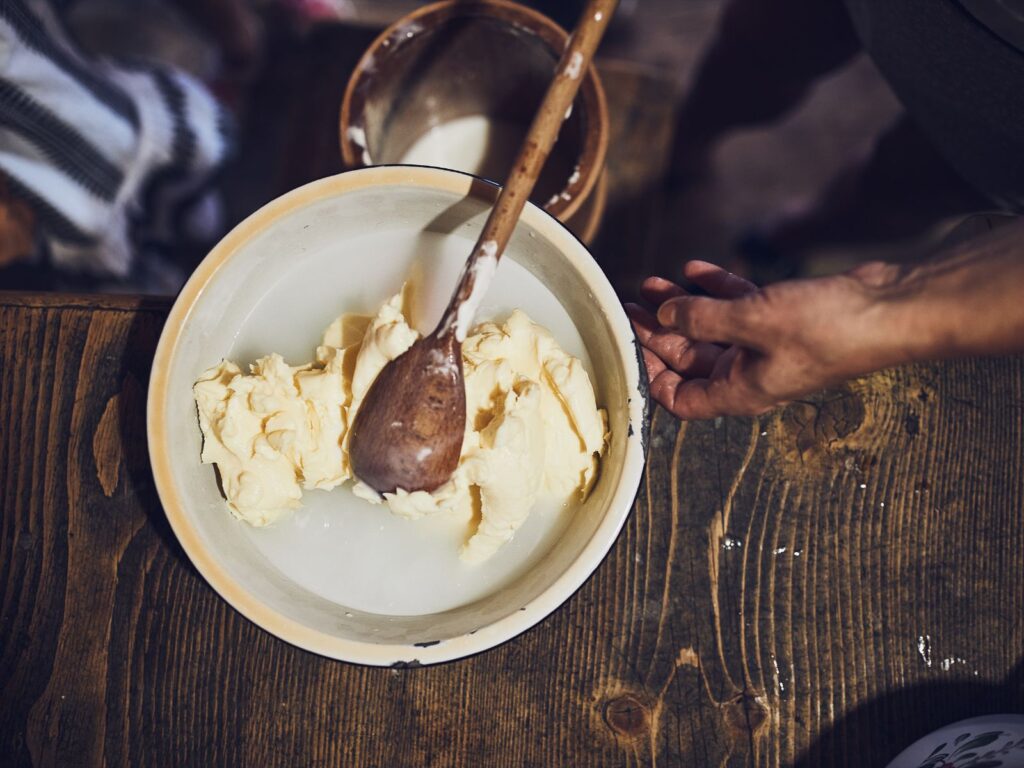
But this is essentially where the similarities end. So, let’s have a look at the characteristics that set these two hugely popular dairy products apart.
Production
One of the major differences between these two products comes down to how you make them.
To make cheese, you need a coagulating agent, such as rennet or an acid, to milk. This causes the milk to separate into curds and whey. Next, you drain the curds, add salt and transfer them into moulds.
As a matter of fact, you can make most cheeses by following those steps. However, there are some exceptions to this rule but that is a whole new topic in its own right.
Conversely, to make butter, you must separate the fat from the liquid in milk or cream. This can be done by allowing the milk or cream to sit until the fat rises to the top, or by using a machine to spin the liquid and separate the fat. Afterwards, you churn the fat until it becomes solid, with any remaining liquid squeezed out.
Texture & flavour
Additionally, the other main difference between cheese and butter is their texture and flavour. Typically, cheese is solid, with a range of textures from soft and creamy to hard and crumbly. It has a varied flavour that can range from mild to strong, depending on the type of cheese.
Butter, on the other hand, is soft and spreadable to semi-soft in texture. Effectively, this signature texture and mouthfeel has become known as “buttery” around the world. Moreover, most butters tend to have a rich, savoury flavour.
Depending on the amount of salt used in production, the saltiness of butter will vary.
How to serve
Cheese is often served on its own as a snack or appetizer, or used as an ingredient in dishes such as pizza, pasta and sandwiches. It’s also commonly used as a topping for crackers or bread.
In contrast, butter is typically used as a spread on toast, bread or bagels. And it is also used in baking and cooking to add flavour and richness to dishes.
Protein content
Even though they are both made using milk, the protein content in butter and cheese varies quite significantly.
While most butters contain less than 1 g of protein per 100 g, cheeses can contain between 20 g and 35 g of protein. As a result, they are a great nutritious option for people who want to up their protein consumption.
Different types of butter
There are several different types of butter available, each with its own unique flavour, texture and culinary uses. Here are some of the most common types of butter.
Salted butter
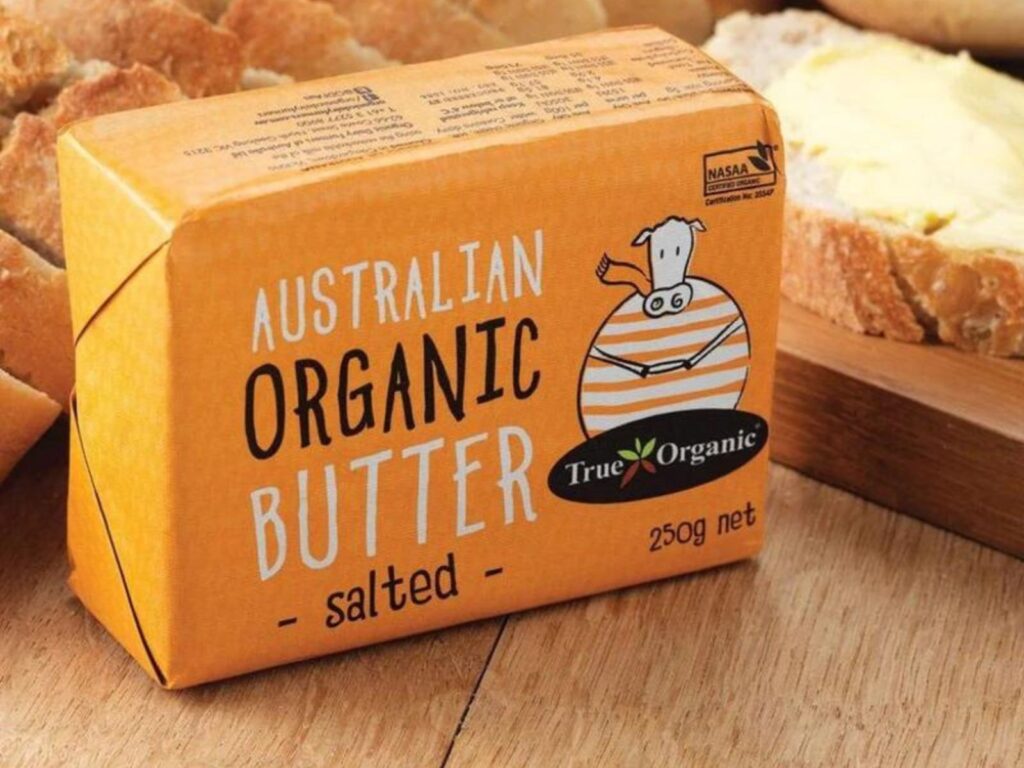
Undoubtedly, this is the most common type of butter and is made with cream and salt. It has a rich and slightly savoury (salty) flavour, and is typically used for spreading on bread or as an ingredient in cooking and baking.
Unsalted butter
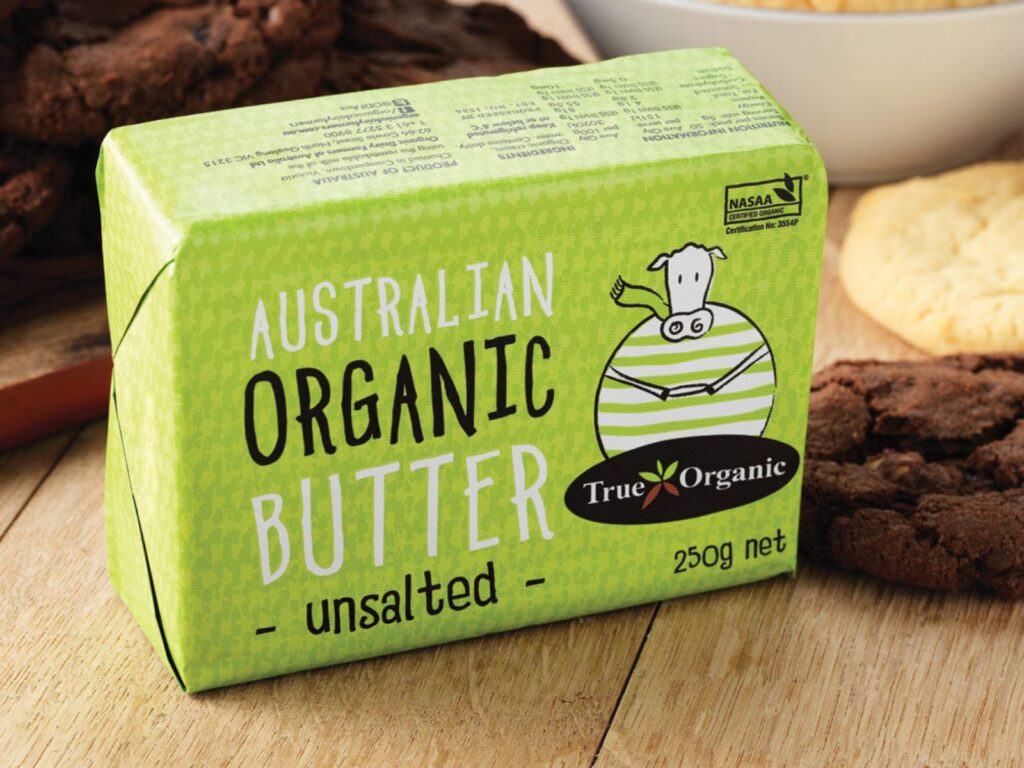
Also known as sweet butter (or doux in French), this type of butter is made with cream but without added salt. As a result, it has a milder flavour compared to salted butter. And it is preferred for baking, as it allows for better control of the salt content in recipes.
Cultured butter
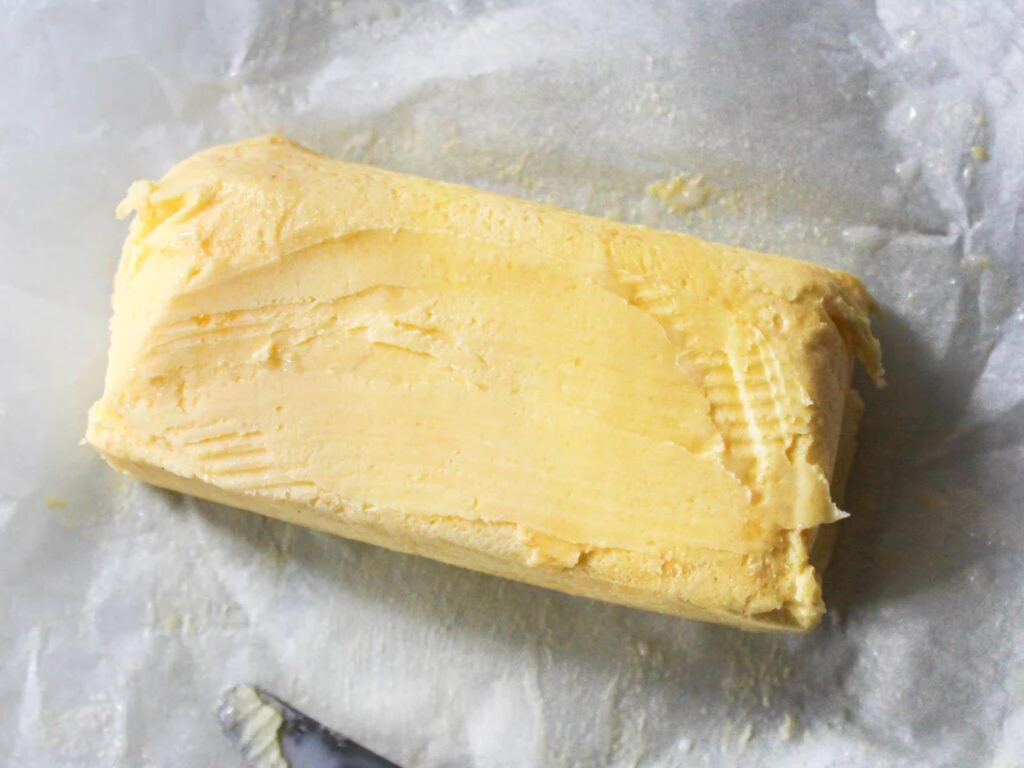
To make cultured butter, you must add live bacteria cultures to cream. Consequently, the starter cultures ferment the cream and give the butter a tangy, slightly sour flavour.
Moreover, cultured butter has a firmer texture and a deeper flavour profile. Because of this, it is often used in European-style pastries and sauces.
Clarified butter
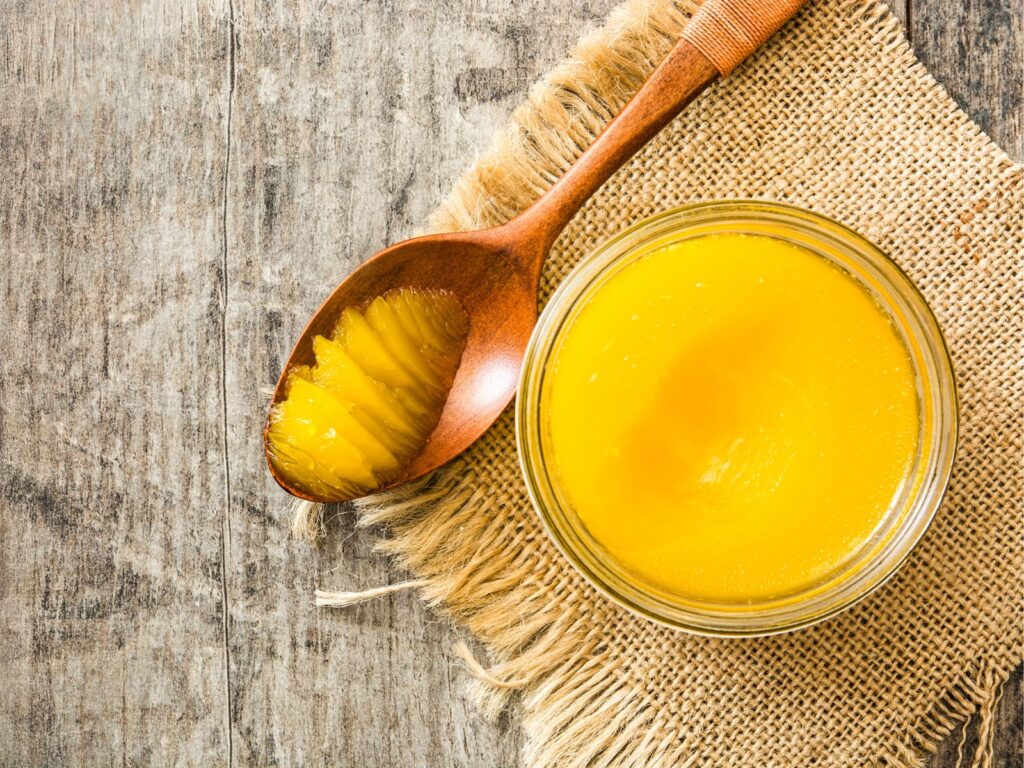
Also known as ghee, clarified butter is made by melting butter and separating the milk solids and water from the pure butterfat. This process removes the lactose and casein, making it a suitable option for those with dairy allergies and lactose intolerance.
Overall, ghee has a nutty, rich flavour and a high smoke point, making it ideal for high-heat cooking.
Whipped butter
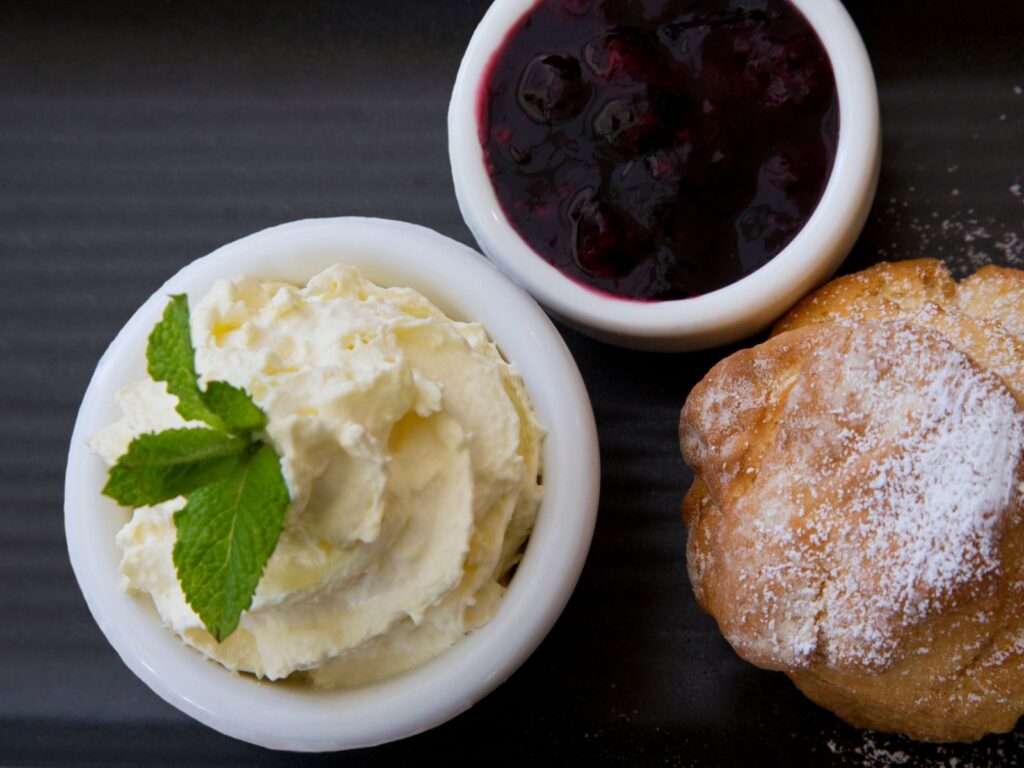
This type of butter is whipped to incorporate air, making it lighter and fluffier than regular butter. As a result, we often use it as a spread or for topping pancakes, waffles and other breakfast dishes.
Flavoured butter
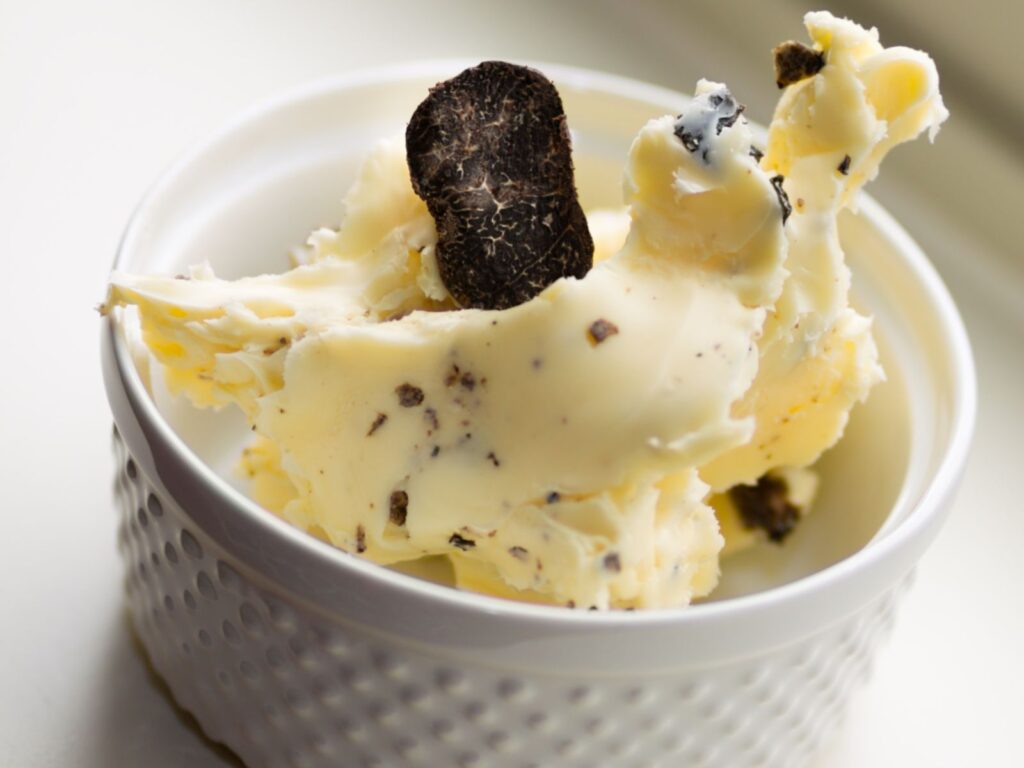
Finally, we have one my favourite types of butter, flavoured butter. As its name indicates, flavoured butter is made by blending butter with various herbs, spices or other ingredients such as garlic, lemon, honey or truffle.
The additional ingredients add a certain depth of flavour and a touch of sophistication. While you can definitely use this butter for cooking, you will want to spread it on a warm crunchy baguette to experience its flavour in all of its glory.
Different types of cheese
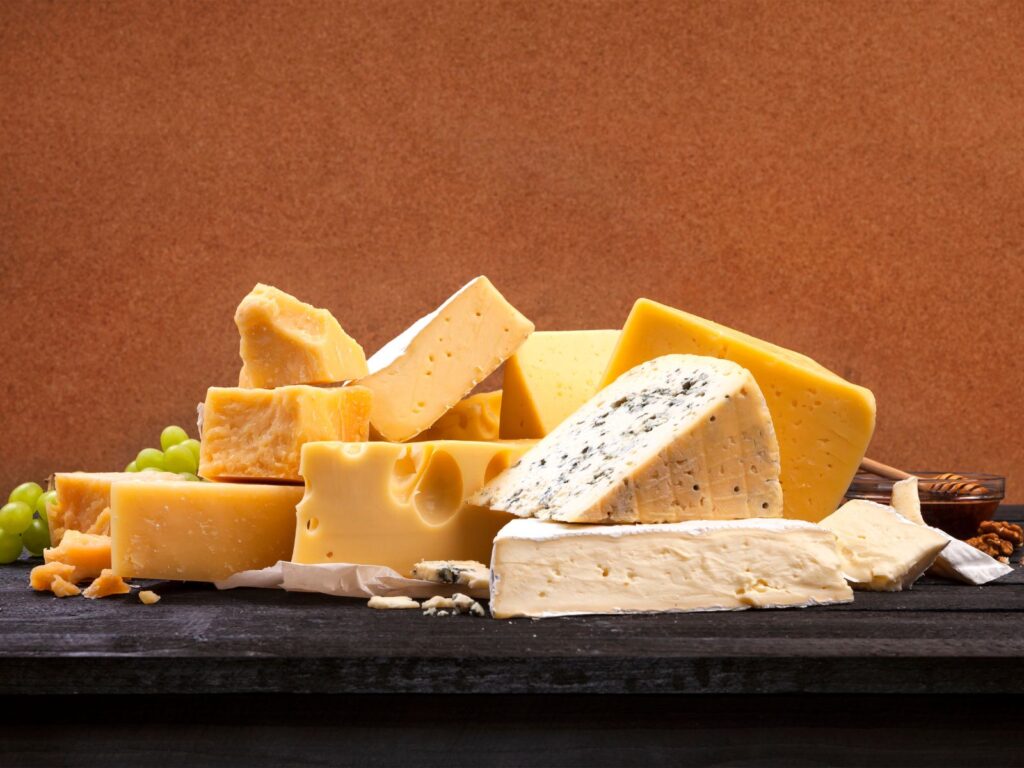
Compared to butter, cheese is a much more varied dairy product. Actually, we’ve written an entire post covering the different types of cheese. As you will see, they can vary tremendously in aroma, texture and flavour.
Summary
Cheese and butter are two popular dairy products with distinct flavours and textures. They are both typically made with milk or cream. But their production methods, flavour and texture vary quite significantly.
So, whether you’re a cheese lover or a butter fanatic, there’s no denying the deliciousness of these classic dairy products. What’s your favourite type of butter. Let me know in the comments below.
